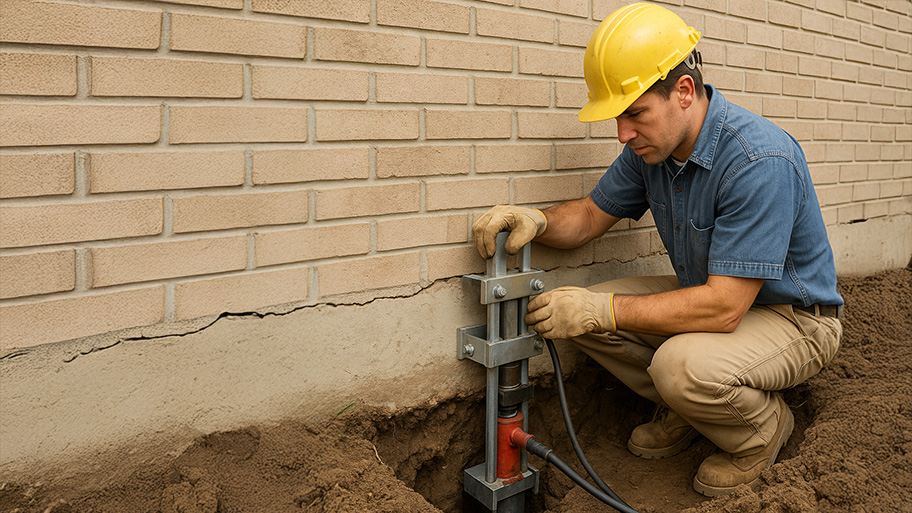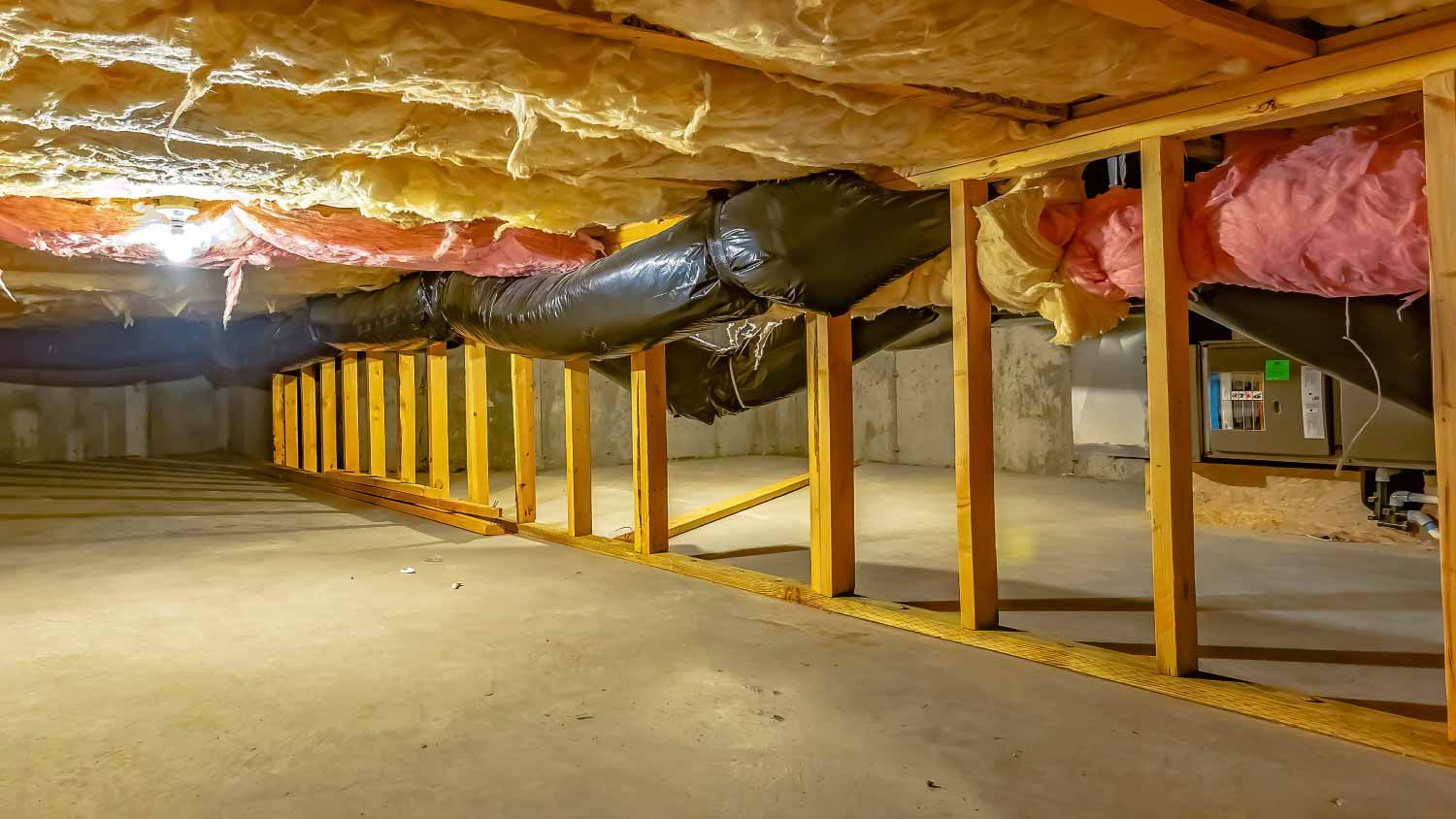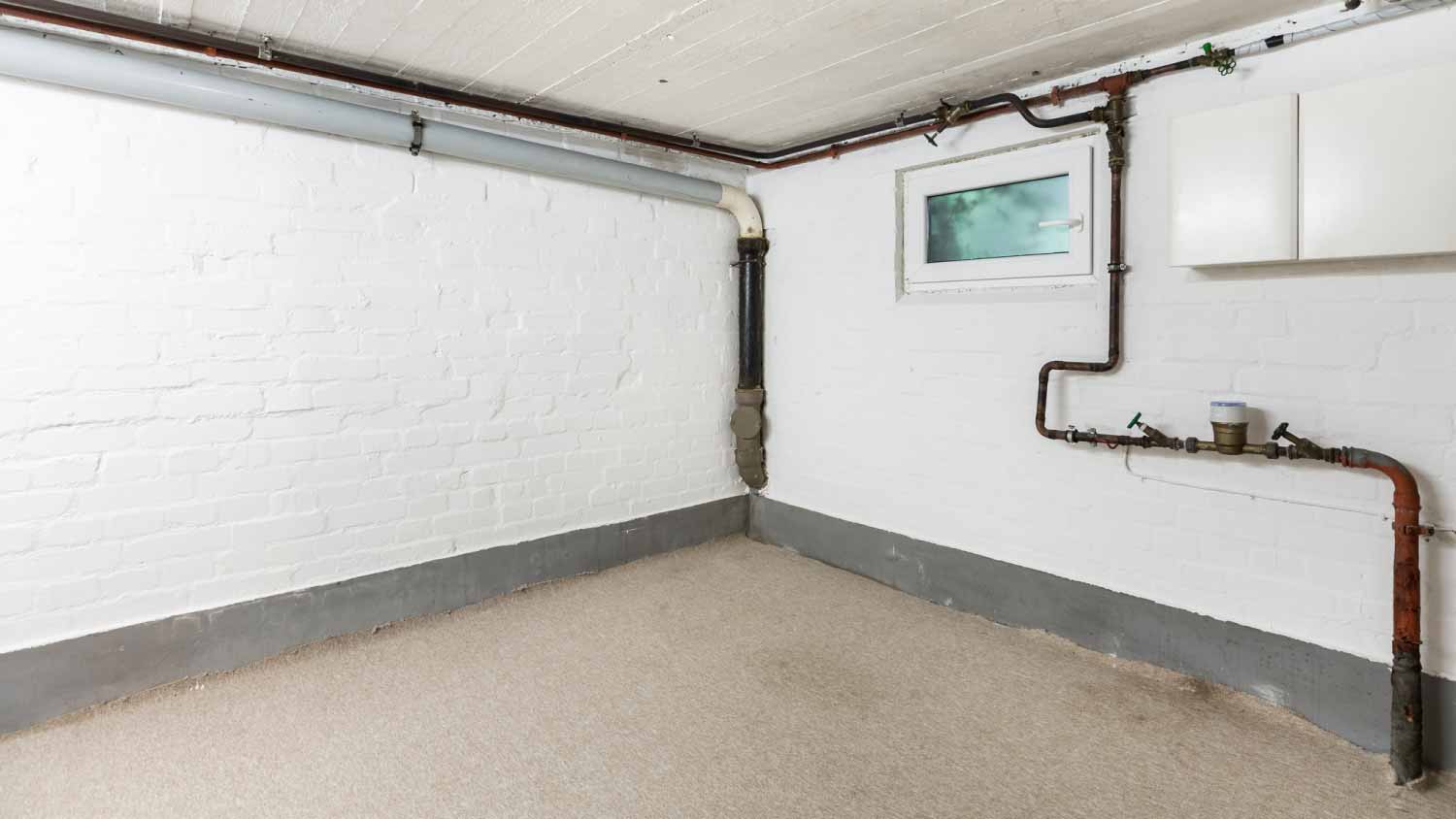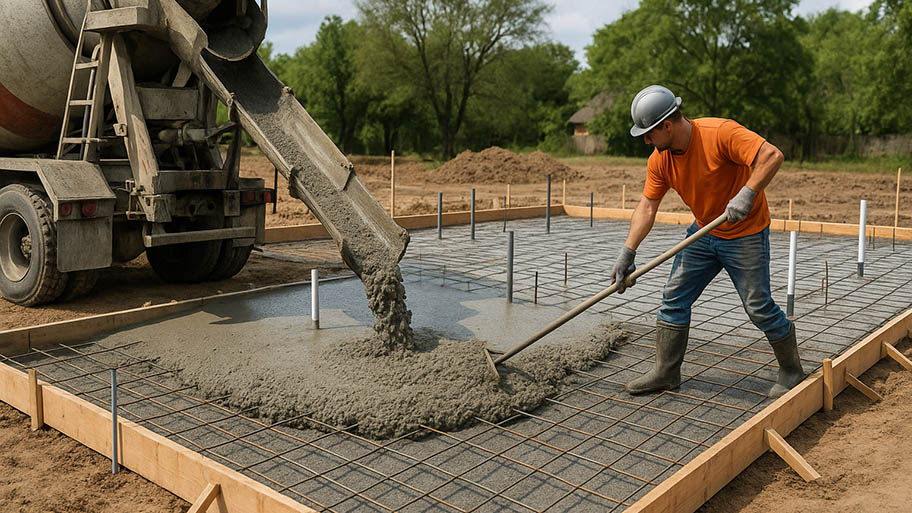
Whether trying to protect it or transport it, raising a house is no small feat. Read on to find out everything you need to know about the cost to raise a house.
Basements are more useful than crawl spaces


Basements add more value to your home and can add living space.
Crawl spaces are more affordable and faster to build.
Both options provide space for storage and easy access to utilities.
If you’re building a home or looking to move into an existing one, you might need to decide if a crawl space or a basement foundation is right for you. While basements are generally more desirable, both options have upsides and drawbacks, and the one that’s right for you depends on a few factors. In this guide, we’ll explain the differences between crawl spaces and basements to help you decide which option suits you best.
When comparing a crawl space versus a basement, you'll find perks and downsides to each option. Both feature concrete walls for support, a solid floor, and extend the storage space of your home. Crawl spaces, however, will only reach an average of four feet underground and feature either a dirt or concrete floor.
They typically house pipes, wiring, and some home systems, but are not large enough to offer additional living space. Crawl spaces cost about half the price of basements, though crawl space repair costs can add up when not properly maintained.
Basements extend much deeper into the ground, often between seven and 10 feet. There are far more design options for this reason, including a finished basement. Homeowners have the option to store and house larger items in basements, including furnaces and large hot water heaters. That being said, they are not ideal in all areas, particularly climates prone to flooding.

Crawl spaces are spaces beneath your home that are around 4 feet deep, give you access to the underside of your main floor, provide access to utilities that run through the space, and give you additional room for storage. Crawl spaces have concrete block walls around the perimeter and can either have dirt floors or a floor made of a large concrete slab. The latter is more common.
Since crawl spaces are too small to walk in standing up straight, they don’t offer potential living space like a basement would and are almost never finished.
| Pros | Cons |
|---|---|
| Requires less excavation | No additional living space |
| Quick installation | Higher cost than slab foundation |
| Offer utility access | More excavation than some foundations |
| Increase storage | Moisture and pest issues are common |
| Increases home insulation | Lower ROI |
| Supports home in cold climates | Difficult access |
Best for: Budget-friendly options for areas with freeze-and-thaw cycles
Crawlspaces share several of the perks of a basement without as much excavation and at a lower cost. The extra room increases storage and provides a place to house some small housing systems. It also acts as a deeper support for climates with frequent freeze-and-thaw cycles.
Crawl spaces require ongoing maintenance, so it's important to know how to hire a crawl space contractor if you suspect a problem. Pests, moisture, and temperature fluctuations that affect the comfort of your home are common issues. There is also no option to convert the area into a livable space as it is often difficult to access and only offers enough room to crouch or crawl.

Basements are similar to crawl spaces in that the perimeter of the foundation is a concrete block wall, but the floor is almost always a concrete slab. The biggest difference between a basement and a crawl space is that a basement is much deeper in the ground, usually between 7 and 10 feet, giving you plenty of room to stand up. That means you have the option to finish a basement and convert the area to additional living space. Basements add more to your home value, primarily because the space is more versatile and usable.
Basements require more excavation during construction, so the cost to dig out a basement is significantly higher, and the process takes longer. They also come with the same risk of moisture issues, musty basement smells, and pest infestation as crawl spaces.
| Pros | Cons |
|---|---|
| Increases home value | Highest costs among foundations |
| Additional living space | Extensive excavation |
| Finished rental opportunity | Longer installation |
| Easier access | Prone to pest and moisture issues |
| Increases utility space | Prone to flooding |
| Ideal for deep frost lines |
Best for: Extending your living space in areas with low frost lines
Installing a basement may be an investment, but it can potentially raise your home value due to the extended livable space. Some homeowners can even choose to use the room for an in-law suite or a rental unit. Basements are also easier to access, can be used for shelter during harsh weather, and increase space for storing home systems. Structurally, basements extend deeper below the frost line, adding more stability for homes in the coldest climates.
Among foundation costs, you will pay the most for a basement, especially if you plan to finish it or add an external exit. Basements also take longer to install and require about double the excavation as a crawl space. It is also important to prepare your basement for flooding or one of the other common causes of a leaky basement.
Crawl spaces and basements are two of the only types of foundations that give you an underhome area that’s completely closed off to the outside. Still, they differ when it comes to a few factors.
From the outside, crawl spaces and basements look more or less identical, with a foot or two of the concrete foundation coming up out of the ground and supporting your home. On the inside, though, basements are more spacious and often look more inviting. Many homeowners finish their basements, which converts the area to potential living space, making basements far more versatile and giving the inside a much more approachable appearance.
You can insulate your crawl space to improve your home’s energy efficiency, install moisture barriers to keep your crawl space dry or radon barriers to mitigate radon vapor intrusion, include drainage systems like sump pumps, and house utility components like water heaters and boilers in a crawl space.
Basements come with many more options for customization. You get the same options as you would with a crawl space, plus you can finish the area for additional living space, install an additional bathroom with proper permits, convert the area to a rental space for additional income, and finish a portion of your basement to keep an unfinished part for storage.
The cost of crawl space encapsulation, insulation, and other treatments will be more affordable than it would be with a basement given the smaller area that needs treatment, but basements still have far more options for customization.
Crawl spaces and basements both consist of concrete block walls and concrete slabs. Since concrete is a highly durable material, both types of foundations will last between 50 and 100 years, or 75 years on average. Both need about equal maintenance and preventive measures to avoid damages, water leaks, and pest infestation, but with the proper precautions, both can last for a lifetime.
Building a crawl space foundation costs around $14,000, or between $5 and $16 per square foot. Basements are more expensive, at an average of $30,000 or between $25 and $50 per square foot. Finished basements can total even more, sometimes in excess of $50,000.
Basements sit deeper in the ground, which means they require about twice as much excavation as crawl spaces. Not only are the labor costs for basements more expensive, but the concrete block walls are approximately twice as high, too, so the material costs are higher when constructing a basement as well.
Basements and crawl spaces both involve the same process during installation, which includes excavation, ground compaction, building a form, pouring the concrete slab, and either constructing concrete block walls or pouring solid concrete walls around the perimeter. While the process is identical, basements require much more excavation, so crawl spaces are faster to install.
Both foundation styles are relatively easy to repair compared to a slab foundation because they provide direct access to the foundation walls and the slab for inspection and repair. However, basements have a more convenient access point—usually stairs—and provide more room for equipment and basement foundation contractors to move around. As such, repairing a basement versus a crawl space is a little bit easier.
With that being said, crawl space repair costs less than basement repair, even though basement repair is a little more convenient to carry out.
Similarly, basements are easier to maintain because they give foundation experts more room to move and use heavy equipment, making the job a little easier. Basements are a little more likely to see issues since there’s more concrete exposed to the earth and moisture outside, but the risks are more or less equal.
It’s worth mentioning that most people frequent basements more often than crawl spaces, so it’s more likely for homeowners to identify an issue in a basement over a crawl space. However, if the basement is finished, then identifying problems on the concrete block walls can be more challenging, given they’re covered by framing and drywall.
Overall, maintenance is still easier in a wide-open basement, although identifying problems that require maintenance is a little more likely in crawl spaces. If you do find issues with either type of foundation, we recommend seeking professional help by contacting a concrete foundation company near you.
Both types of foundations are expected to last for an average of 75 years, but they can easily stretch to 100 years or more with proper maintenance.
Basements are more desirable for most homeowners for a few reasons, which means they’re more valuable when it comes to resale. Basements will almost always add more value to your home, especially if they’re finished.
From average costs to expert advice, get all the answers you need to get your job done.

Whether trying to protect it or transport it, raising a house is no small feat. Read on to find out everything you need to know about the cost to raise a house.

A foundation for a new-build home averages around $11,000. Find out all the factors that affect the cost of a foundation and how to save money.

A bowing basement wall needs immediate repair. Learn how much it costs to repair a bowing basement wall and what factors can affect the final price tag.

All foundations settle, but some can develop related structural issues. Use this guide to identify foundation settlement and determine when to take action.

Worried about pier and beam foundation repair costs? Get a better understanding of how to budget by learning about the repair methods available to you.

Knowing the parts that make up your home’s foundation can help you keep it in good shape. Learn the parts of a house foundation and what each one does.